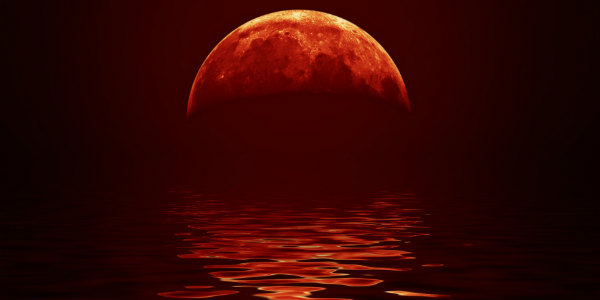
A rare yet remarkable celestial treat is just a couple of hours away for a majority of Earth; the longest total lunar Eclipse or the blood moon, which happens to fall on Friday, July 27. A total lunar eclipse would paint the entire moon blood red on Friday.
The entire celestial event is likely to last for approximately 4 hours. However, the phenomenon of totality, which occurs when the moon is completely engulfed in Earth's shadow would last for approximately 1 hour and 45 minutes, making it the longest total lunar eclipse of the century.
The eclipse will be observable in parts of South America, most parts of Africa, and Central and West Asia. However, for the people of North America, the Moon would be below the horizon due to which, they would have to miss this chance.
[yuzo_related]
The interesting fact is that in India, the eclipse, both partial and the total, will be visible in almost all the parts of the country. As per the Indian timings, the eclipse will be in its partial form at around 11.52 pm. Meanwhile, the total eclipse may begin at 1 am on 28 July.
However, most cities including Srinagar, Shimla, Dehradun, Amritsar, Chandigarh, Karnal, Jaipur, Delhi, Lucknow, Bhopal, Bhubaneswar and Eastern India in north India are likely to remain cloudy. Along with this, rains are also expected cities like Ranchi, Patna, and Kolkata. Which is why people staying in these parts may have to sacrifice on this treat.
Moreover, Monsoon is weak over the central and western parts of the country, due to which people staying in Gujarat, Maharashtra, Telangana, Andhra Pradesh, Tamil Nadu, Kerala, and Karnataka may experience the celestial event. There are fewer hopes of rains in Surat, Mumbai, Nashik, Pune, Hyderabad, Bangalore, Trivandrum, Chennai and thus, the astronomical event may be in spectated clearly.
Why is the Moon called a ‘Blood Moon’:
Lunar Eclipse occurs when the Earth passes between Moon and Sun. The Moon is called Blood Moon since Moon takes a reddish hue. The sunlight is detoured by the Earth’s atmosphere, due to the presence of a blanket of air, hits the darkened Moon. Due to the fact that in contrast with the blue and violet wavelengths, the red wavelengths are scattered less, thus the other two wavelengths are absorbed while the red wavelength is refracted, and thus the moon appears red from our vision.
Another reason not to miss and catch this astronomical treat is that the next longest total lunar eclipse is not expected to occur before June 9, 2123.
Image Credit: Amazon.com
Any information taken from here should be credited to skymetweather.com


